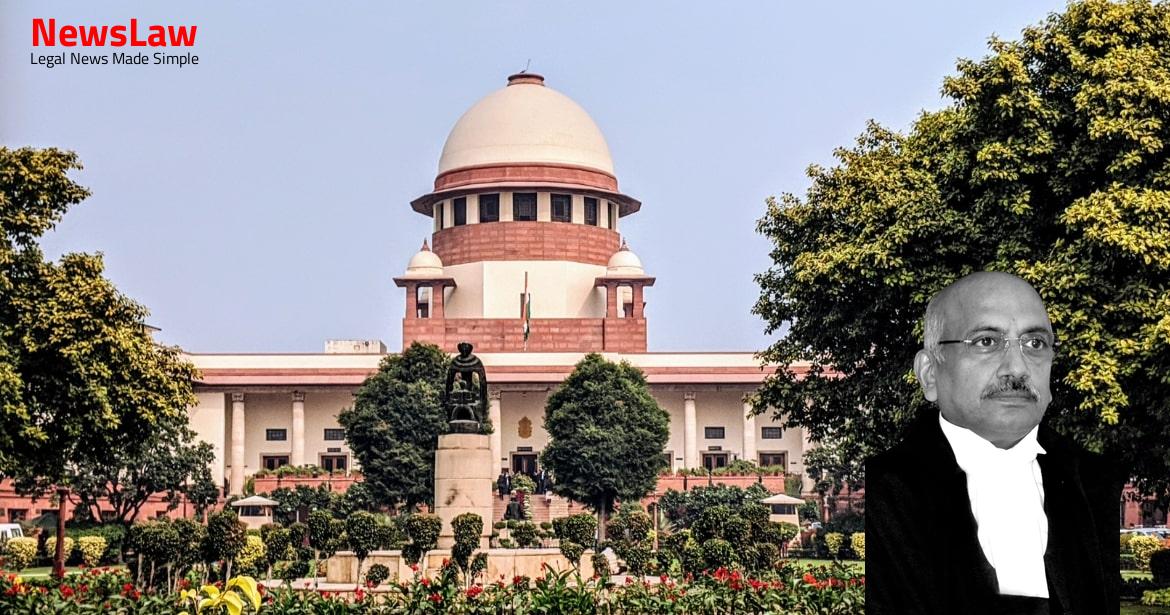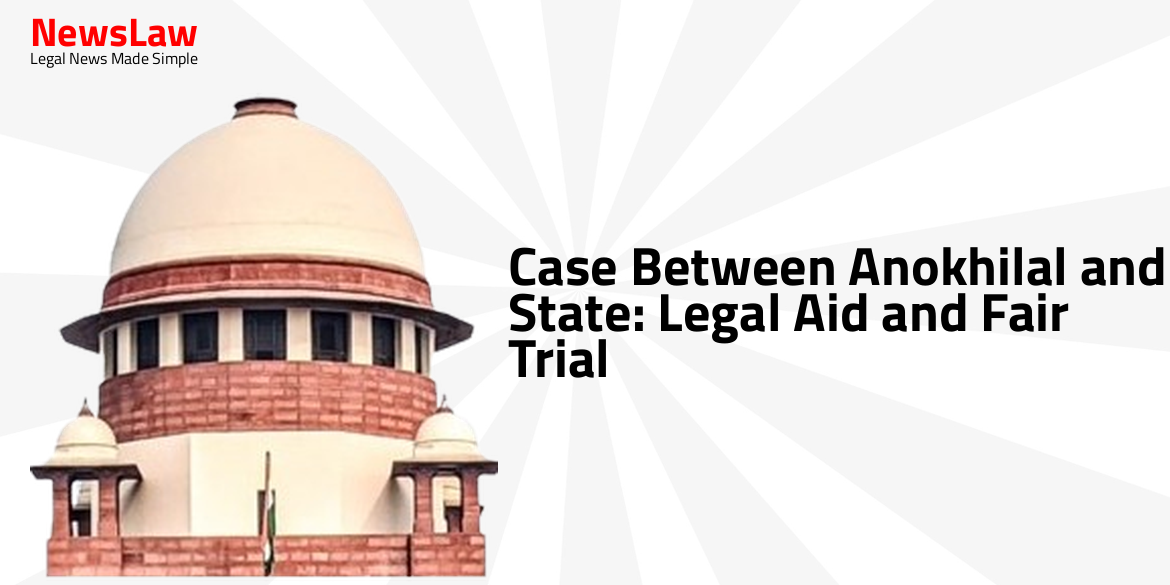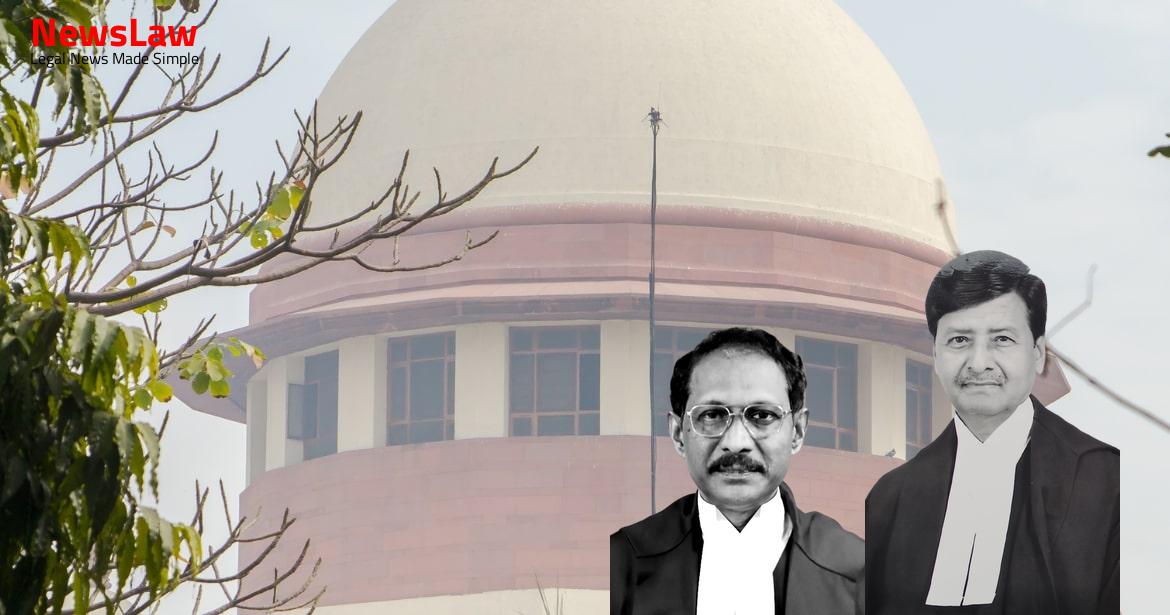Delve into the intricate legal analysis of common intention in criminal convictions as examined by the court in a recent case. The concept of common intention under Section 34 of the Indian Penal Code is explored, shedding light on the vicarious responsibility shared by individuals involved in a crime. The post focuses on the court’s evaluation of evidence, witness testimonies, and physical evidence found at the scene to establish guilt beyond reasonable doubt. Stay tuned to gain insights into the application of legal principles in criminal cases.
Facts
- An FIR was lodged at 11:45 PM by P.W.1 Ramhari Shinde at Kallam police station.
- Suhas succumbed to his injuries at S.R.T.S. Medical College and Hospital, Ambajogai at about 7:15 PM.
- The doctor advised to take the deceased to Ambajogai for further treatment.
- Appellants argued that the FIR timing of 11:30 PM was false.
- Second accused Samadhan Shinde was convicted while the others were acquitted.
- The accused and absconding accused attacked Suhas with a sword in front of Raviraj Beer Bar.
- Police officers PW-19 and PW-20 testified during the trial.
- The prosecution relied on eyewitness testimonies of P.W.2, P.W.3, P.W.4, and P.W.18.
- The incident took place at Shivaji Chowk, Kallam, where the accused assaulted Suhas.
- The defense claimed false implication due to political enmity and property dispute.
- An FIR was registered at Kallam police station for the attack on Suhas.
- The accused chased Suhas into Kothavale Jewellers.
- Observations were made about the eyewitnesses’ credibility and relevance in the case.
- The trial court acquitted A-1 Netaji Shinde and A-3 Balasaheb based on the medical evidence and lack of injuries corresponding to the acts attributed to them.
- The High Court reversed the acquittal of A-1 and A-3, convicting them of the offences charged.
- Eyewitness testimonies and recoveries made during investigation were ignored by the trial court.
- A-2 Samadhan was convicted by the trial court for his participation with an absconding accused.
- The High Court held that the trial court erred in overlooking eyewitness depositions and giving undue primacy to medical evidence.
- The state and A-2 Samadhan appealed against the findings of the trial court that absolved A-1 and A-3.
- The High Court granted the state leave to appeal and A-2 Samadhan appealed against his conviction and sentence.
Also Read: Legal Analysis of Claim for Loss of Profit in Delayed Contract
Arguments
- The dying declaration was deemed unreliable due to the circumstances surrounding the deceased and the political rivalry between the families of the deceased and the accused.
- Witness testimonies from PW-1, PW-2, PW-3, PW-4, and PW-6 lacked explanations for their presence at the scene of the crime.
- Concerns were raised about the absence of prior concert or meeting of minds between the absconding accused and the appellants, casting doubt on their involvement.
- Issues were highlighted regarding the recovery of the accused’s clothes and motorcycle, with contradictions and lack of proper explanation in the evidence.
- The prosecution’s heavy reliance on partisan witnesses related to the complainant raised suspicions of a fabricated story to implicate the accused.
- Criticism was directed towards the delayed lodging of the FIR and the questionable conduct of police in handling the case.
- The discrepancies in the witnesses’ actions after the incident, such as not reporting it to the police, were noted as undermining their credibility.
- Overall, the argument presented was that the prosecution’s case lacked substantial evidence and coherence, leading to doubts about the involvement of the accused.
- The trial court was influenced by the arguments on behalf of the accused that the first intimation about the crime constituted the first information report.
- The trial court discarded the evidence of PW-1 regarding his complaint to the police about the offence at 11:30 PM, treating it as a statement under Section 161.
- The evidence of PW-8 regarding the alleged theft of the motorcycle was correctly disbelieved by the trial court.
- The trial court believed that Samadhan, one of the accused, was a participant in the crime and had a common intention.
- Counsel for the state urged the court not to interfere with the findings in the impugned judgment.
- The High Court held that an overall appreciation of the evidence showed the accused were guilty beyond reasonable doubt.
- The trial court erred in overlooking the ocular evidence of PW-2, PW-3, PW-4, PW-5, and PW-18 according to the state’s counsel.
Also Read: Public Declaration Requirement in Marriage under Hindu Marriage Act
Analysis
- The court analyzed the evidence presented in the case and focused on the role of the accused in the attack on Suhas.
- The court noted that the absence of physical injuries on the deceased did not diminish the accused’s role, as eyewitness testimonies clearly implicated them.
- The concept of common intention under Section 34 of the Indian Penal Code was discussed, emphasizing that physical presence to facilitate the offense is sufficient for conviction.
- The court highlighted the consistent testimonies of eyewitnesses and the physical evidence found at the scene, supporting the prosecution’s version of events.
- The failure of the trial court to consider the full FIR and the subsequent statements was pointed out, leading to a misdirected focus on initial intimation.
- The court rejected the argument that the police falsely implicated the accused, stating that the evidence supported the conviction.
- The medical evidence detailing the injuries on Suhas was also highlighted, showing the severity of the attack.
- The court concluded that the High Court made the correct decision in re-evaluating the evidence and convicting the appellants based on the established facts and testimonies.
- The foundation for conviction on the basis of common intention is vicarious responsibility shared with others.
- Direct evidence of common intention is rare; it is inferred from the facts and circumstances of a case.
- Appellate courts need to consider various factors when re-evaluating evidence in an appeal against acquittal.
- The High Court’s conclusions of fact should be respected unless there are substantial reasons to differ.
- The powers of appellate courts in appeals against acquittals have been elucidated by various judicial decisions.
- Common intention involves individuals acting together towards a common purpose, regardless of their specific roles.
- Present appeals dismissed without order on costs.
- The appreciation of evidence and circumstances from the record deemed unreasonable and irrational.
Also Read: OCI Cardholders’ Rights and Retroactive Notifications
Decision
- The High Court reversed the acquittal
- Conviction was recorded against all the appellants
Case Title: NETAJI ACHYUT SHINDE(PATIL) Vs. THE STATE OF MAHARASHTRA (2021 INSC 200)
Case Number: Crl.A. No.-000121 / 2019



